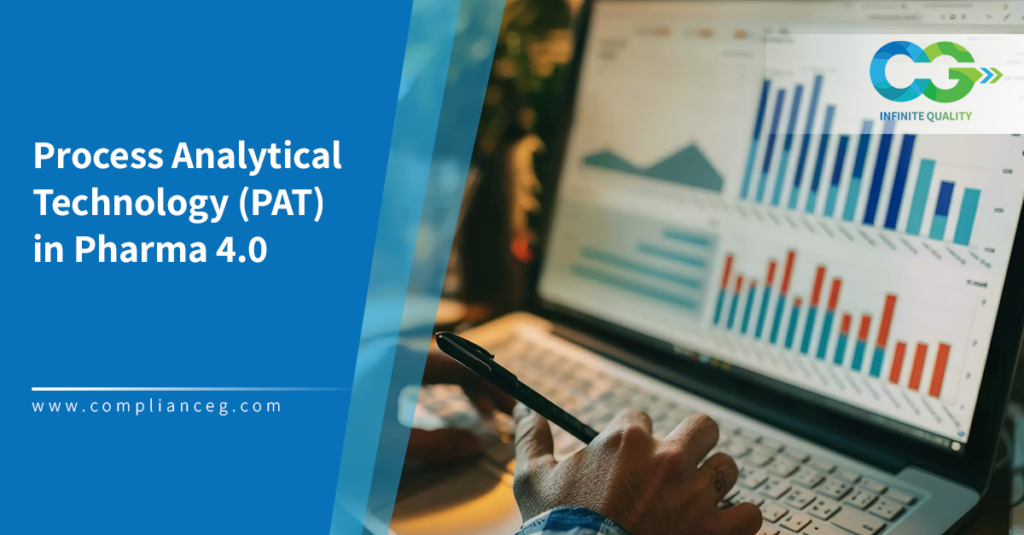
Article Context:
The Rise of PAT
The vision and methodologies of Process Analytical Technologies (PAT) closely align with emerging trends such as Industry 4.0 and Internet of Things (IoT). Although these trends have gained significant traction on management strategic initiatives, PAT has not yet received the same level of attention within large life science organizations. As traditional approaches evolve, PAT stands out as a key enabler for digital transformation and Pharma 4.0, significantly impacting development and production processes for leading pharmaceutical manufacturers worldwide.
Selection of PAT Tool and Technology in Manufacturing
PAT tools and technology solutions are continually evolving to become more user-friendly, advanced and reliable. These improvements are making it easier for organizations to adopt and integrate PAT into their manufacturing processes. For instance, PAT tools like real-time spectroscopy and advanced sensors have streamlined data collection and analysis, making it simpler for companies to enhance their production processes. Historically, many PAT projects were limited to development stages and failed to deliver immediate commercial benefits. Early implementations of PAT might have involved complex, bespoke systems that did not translate into tangible improvements or financial gains. However, advancements in PAT technology have transformed this scenario. Today, choosing the right PAT tool can significantly revolutionize manufacturing operations. For example, the implementation of continuous inline monitoring system in pharmaceutical production can drastically improve process efficiency and product quality by providing real-time data and immediate feedback loops for critical process parameters (CPPs).
The success of a PAT solution often depends on a careful selection of the critical areas within the manufacturing process. If a manufacturer opts for a PAT system that integrates seamlessly with their existing infrastructure, such as a data acquisition system compatible with their production line’s automation controls, the implementation and transition to continuous process monitoring and control will be smoother. Tools like advanced process control (APC) software that integrates with existing manufacturing execution systems (MES) can facilitate this integration, allowing for more effective process adjustments and improved performance. When implementing PAT solutions, manufacturers should account for future trends to ensure their solutions remain relevant. Incorporating emerging technologies like artificial intelligence (AI) and machine learning (ML) can provide long-term and data-driven value. These technologies can enhance predictive analytics and process optimization, ensuring that the PAT system evolves with industry advancements.
PAT for Digitalization Laboratories
As discussed, PAT , PAT has been primarily associated with manufacturing and production processes. However, as industries move towards fully digitalized development platforms and product delivery lifecycles—a key hallmark of Industry 4.0—PAT is increasingly becoming integral to smart laboratories. This shift underscores PAT’s role in ensuring the acquisition of precise, timely, and reliable data across the entire lifecycle of a product, from research and development (R&D) through to production. The transition to digitalization in laboratories involves incorporating PAT to enhance data accuracy and efficiency. Smart laboratories leverage PAT tools to capture real-time data, which aligns with the broader objectives of Industry 4.0, including automation, data integration, and intelligent analytics. For instance, integrating PAT tools like real-time spectroscopy or automated sampling systems into a lab’s digital infrastructure can improve the precision and timeliness of quality data collected during R&D and testing phases. For digital transformation to be effective, it is crucial that the data sourced from production processes is accurate, contemporaneous, and reliable. PAT plays a vital role in achieving this by continuously monitoring and analyzing critical process parameters (CPPs), thereby providing a steady stream of high-quality data. Additionally, the extent of success in a laboratory digital transformation hinges on the reliability of data generated. If the data from laboratory processes is inaccurate or falls outside established parameters, the digital framework may be compromised. PAT helps mitigate this risk by providing consistent and accurate data, which supports effective decision-making and process optimization. For instance, integrating PAT with data management systems allows for real-time adjustments to be made based on accurate data, thereby enhancing overall operational efficiency.
Knowledge Management in PAT
Knowledge sharing is considered a pivotal factor – to implement PAT within smart laboratories, to connect the instruments of general and complex operation and to have interface with external data sources.
PAT Vision for Pharmaceutical Companies
PAT is set to transform pharmaceutical manufacturing by driving the rapid development and implementation of cutting-edge practices in both production and quality assurance. As a regulatory framework, PAT will promote the adoption of innovative techniques that enhance the understanding of physical, chemical, and manufacturing processes within laboratories and pilot facilities. This deeper insight will facilitate more precise control over product development, enabling faster and more accurate progression from development to market.
With PAT tools and technologies, pharmaceutical companies will be able to achieve a comprehensive understanding of their processes. This will not only accelerate the development and release of new products but also improve the reliability of each batch produced. By implementing PAT, companies can streamline their path to commercialization, benefiting from enhanced process control and quicker market entry.
PAT Vision for Technology Manufacturers
With the insights gained from PAT tools, manufacturers can achieve measurable and reliable benefits that can be scaled over time. By creating a well-controlled environment with secure documentation and ensuring compliance with regulatory standards, manufacturers can address both regulatory and organizational requirements effectively. This approach allows for the integration of digital technologies into existing processes, enabling continuous monitoring and automation of processes to ensure consistent throughput and optimal quality in the final product.
Here at Compliance Group, we’re dedicated to helping you achieve frictionless quality by incorporating PAT into your manufacturing and laboratories. To find out more about how our consulting experts can help, email us at sales@complianceg.com.

AUTHOR:
Prarthan Mekwan
Validation Lead
